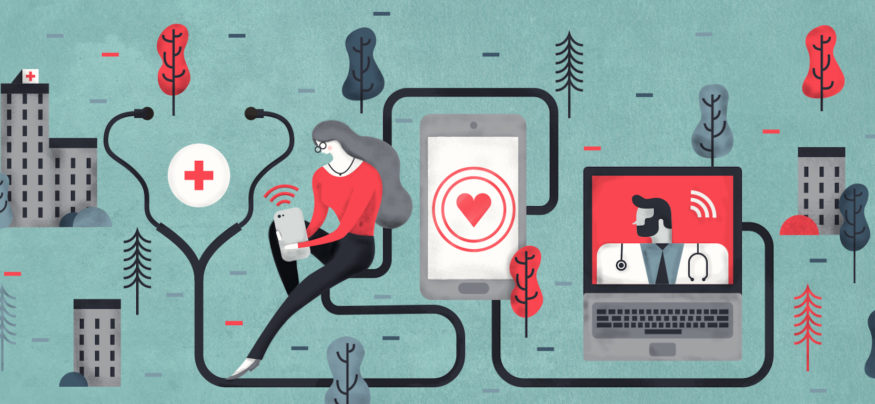
Technology plays a vital role in several aspects of our lives. As we know, the technology has spread across various streams and improved banking or the way the people get connected with family and folks.
Digital Health is the integration of digital technologies in relation with health, living, education, healthcare and much more. The contribution of digital technology in health sector is growing wide and upgrading the delivery care. Digital Health enables authenticated health care sources to view and analyse the patient’s entire records and reports, despite of how many medical practitioners the patient has already visited.
The ultimate focus is to save time in analyzing health, avoiding redundancy of tests, and encouraging more care for patient. Digital way is the modern way and digital users have spread worldwide because of the increased usage in smart phones, gadgets and much more devices.
Everyone are getting so busy with their workload, personal and other issues where they could not spare time for their health. When we are able to prevent and maintain our health through digital method, we can be keen in tracking our health regularly.
Digital health can also help the user and their family members to access their recorded profile online, allowing them to see the lab results once ready, have a complete master check-up and reassuring that their health is fit and complete. These results and access can help the user to have complete attention towards their health.
Electronic medical records allow the health service providers to more effectually manage patient’s health records, such as recurring chronic disease. The self or personal access to the patient health details qualifies the patient themselves to become a health care partner for a longer term.
Technology and medicine have been closely related for so many decades. The persistent advances in pharmaceuticals and medicine have rescued the life of millions of people around the globe. As years run through, the advancement and growth in technology is going to be unstoppable.
Here are the Top 10 Digital Health technologies in 2019:
1. CRISPR
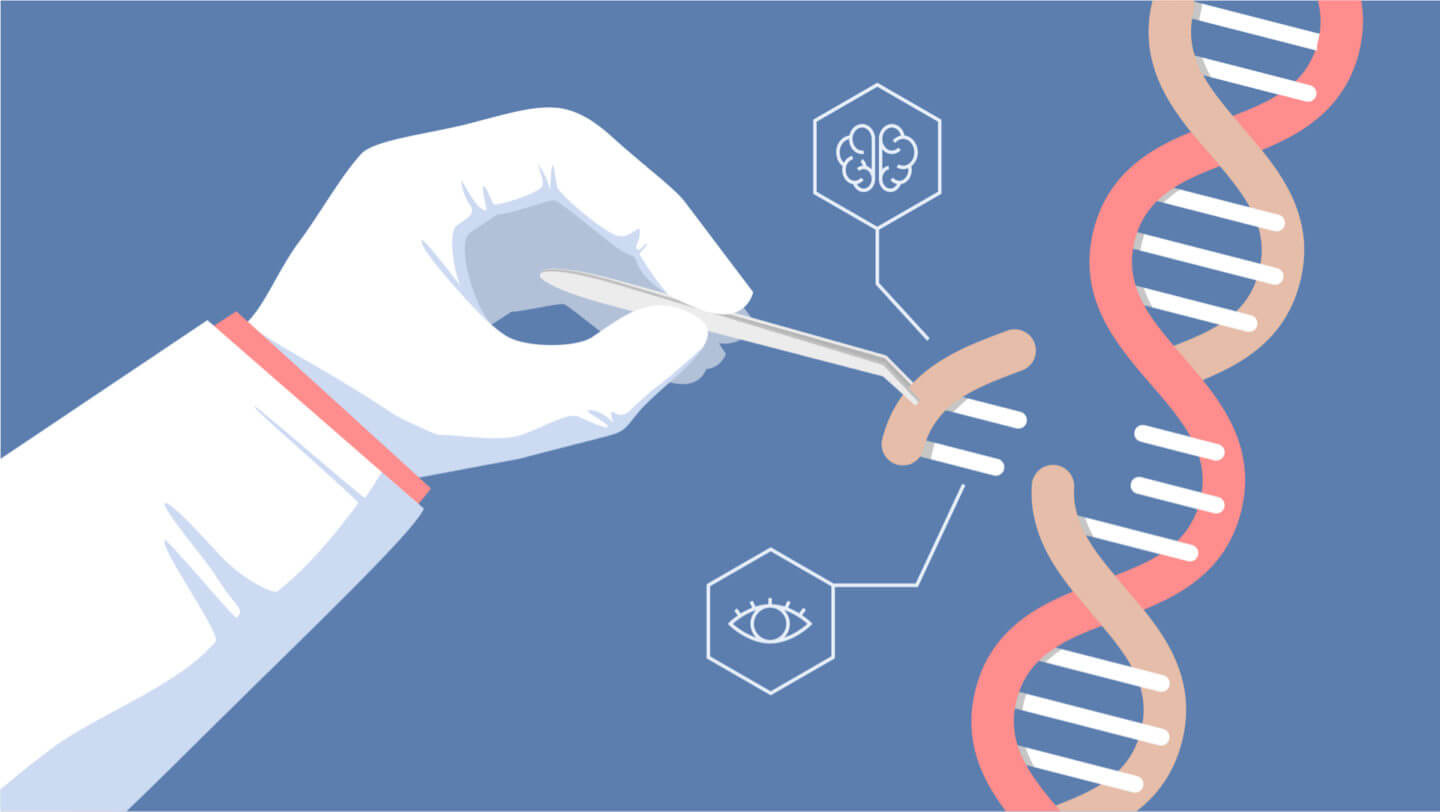
CRISPR is known as Clustered Regularly Inter-spaced Short Palindromic Repeats. CRISPR is the most revolutionary gene-editing tool working without any risks.
Genome editing also known as gene editing is an entity of technologies that allow the scientists or researchers the capability to replace an organism’s DNA. These technologies permit the genetic material to build on, suppress, erase or modify at particular locations in the genome. Several approaches to genome editing technology have been progressed.
The recently developed is CRISPR -Cas9 system. The CRISPR is associated with Protein 9. The CRISPR-Cas9 has created a lot of inquisitiveness in the medical research community because it is quicker, not costly, more precise, and more reliable when compared to other genome editing methods.
The eradication of infected DNA is the efficient way to treat the disease and provide complete transformation. Finding the root cause of the disease is the major setback in this technology. As years run through, pharmaceutical technology and medicine field will continue to grow and flourish. There are minor chronic diseases and long-term fatigue disease which is incurable.
The Job sector in pharmaceutical industry are in much higher demand, the demand is expected to grow as there will be more growth and advancements.
2. Telemedicine
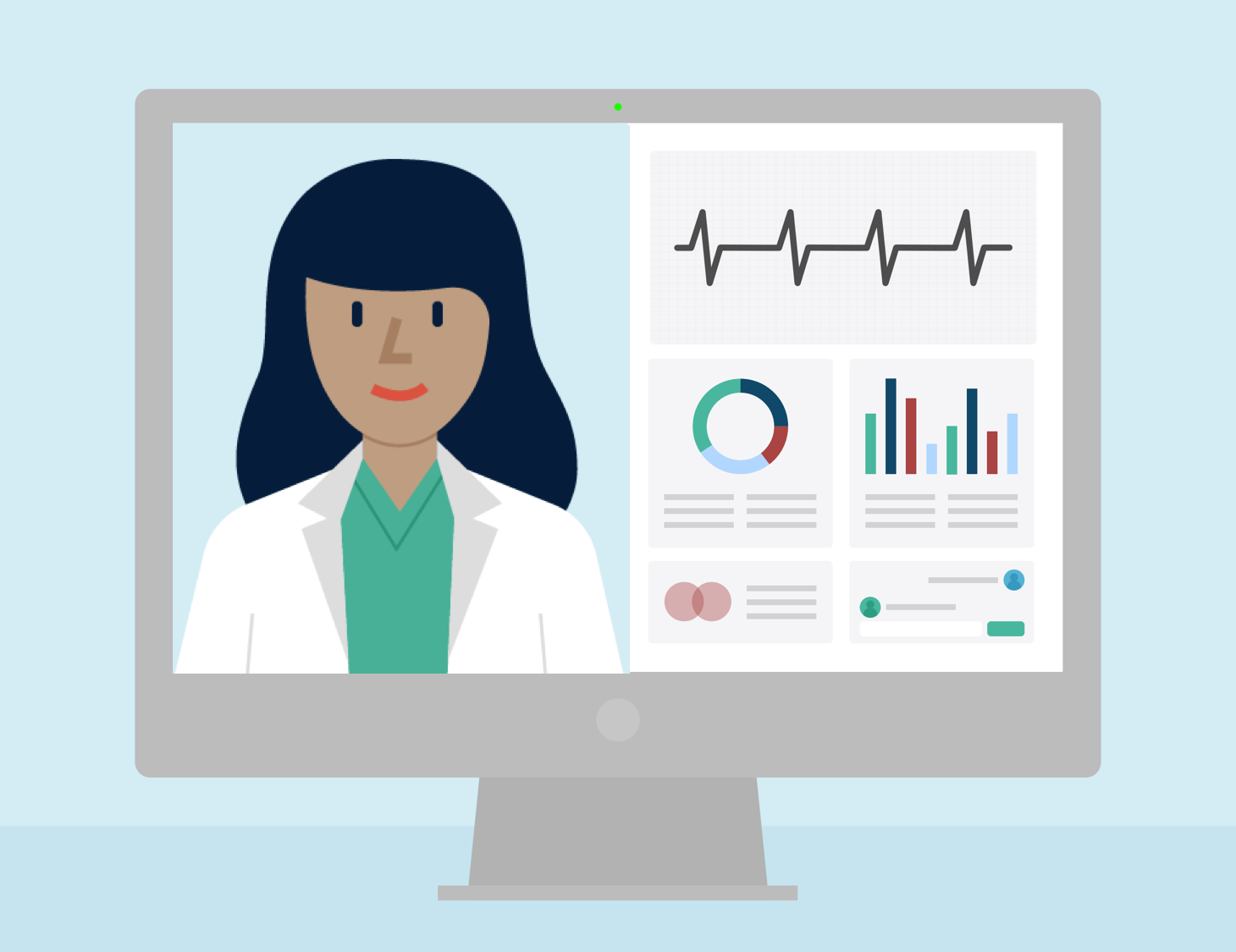
Telehealth or Telemedicine is the home delivery of healthcare facilities such as health evaluation, health discussion, using the help of telecommunication. The Telemedicine provides clinical health consultation and care from distance mode.
Telemedicine technology allows the patient to get a quicker medical care using the digital devices which is a quick deliverable technology. Telemedicine technology makes life simpler with the digital care instead of waiting in the doctor’s clinic or hospital for an appointment and especially this option works out during emergency hours of medication.
With many subscribed services all over the globe, telehealth enables the patient to reach the health care providers through different access points. The Global telemedicine market is expected to grow in billions by 2025.
3. Virtual Reality

Virtual reality is the usage of computer software technology to create an animated environment. The most accessible component is the Head mounted display. Human beings are imaginary creatures and display technology makes perception and immerse a person into an imaginary world i.e virtual reality system images, music, sound, effects and much more.
However, medical students can connect themselves to the real life occurrences using the technology. The virtual reality tools help the medical practitioners gain the depth and knowledge they need by practicing procedures and give a visual knowledge about the human anatomy connection and much more. The VR aid is proven to be very helpful in patient restoration and recovery.
4. Precision Medicine

Precision medicine technology works on the base principle that a particular disease raises varied physical symptoms among different individuals, depending on their genome structure, way of life, and environmental situations. Researchers say that the medical model of precision medicine focus is to form a treatment based on the above said three constraints. Those three constraints helps to predict an individuals response to a particular disease.
In general, medical practitioners or physicians can utilise this technology to give treatment or therapies for cancer patients, rheumatoid arthritis depending on individual genetic development and response.
5. Health Wearables

The need of health wearables has increased since their launch in the past few years. The demand of health wearables are likely to get increase more because of the strong influence in digital technologies.
People use fitness watch to track, measure and analyse their health likewise they use their mobile phone as a smart hub to know more about their health and maintain the health balance. The main focus is to enable the people to monitor and forecast their health in day to day life.
6. Artificial Organs
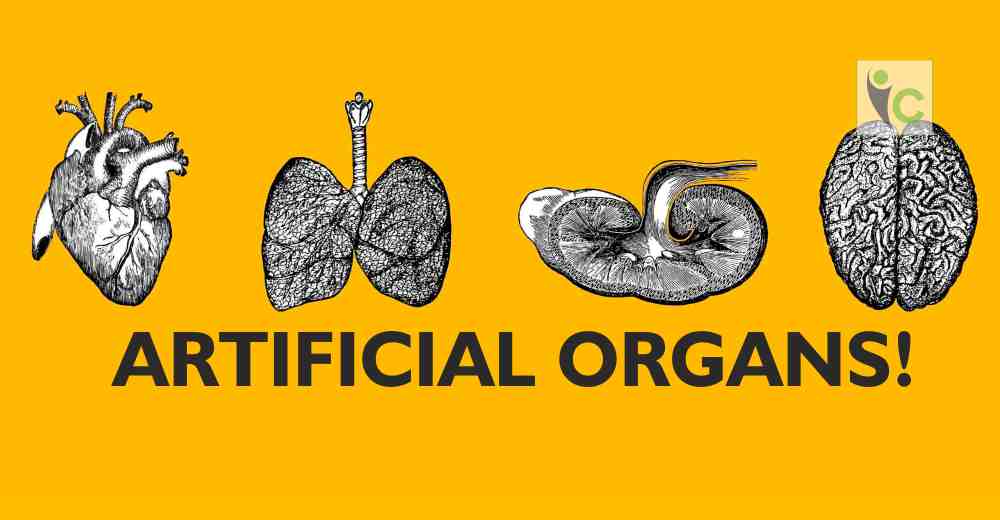
Artificial organs technology saves many people lives who is needful of doing a transplantations and organ failure. People gain a ray of hope out of this revolutionary technology. The Artificial organs started to initiate when skin cells were renewed during skin replacement procedure for skin burned victims. The skin renewal paved way for even more possibilities.
Researchers has been able to create blood vessel, artificial synthetic ovaries, and also a pancreas. The most amazing fact is that these artificial organs get used to a person physical system and start to regrow within the patient’s physical body to replace the repaired organ.
The capability to produce artificial organs that are accepted by the body’s system is a major setback, saving millions of people lives.
8. 3-D Printing
Printing is the generic term used in computing and technology. But when it comes to medical science and technology, 3-D Printing have become one of the trending and emerging technologies.
3-D printing is used to form implants and even joints to be used in a patient’s body during the time of surgery. Let us have a look where the 3D printing is prominently used:
3D Printing labs: 3D printers are directly used in hospitals. The 3D printer looks at the patients anatomy and prints the specific models in prior so that the printed models are used during implants and surgeries.
Economic prosthetics: Organisations like ROMP utilise 3D printing to produce less-cost , high-end prosthetic limbs and orthotic braces for patients who need a recovery in life. The Prosthetics are designed with the latest and safest technology and doing positive changes in the life of many people.
Body Implants: 3D printing enables printed replacements for the body parts such as knees, hips, ankle, spine, and are implanted each year. This technology holds promise with the latest 3D printing technology.
Impairment aids and devices: 3D printing enables to create impairment devices for visually and dental impants in a low-cost and better production.
8. Wireless Brain Sensors
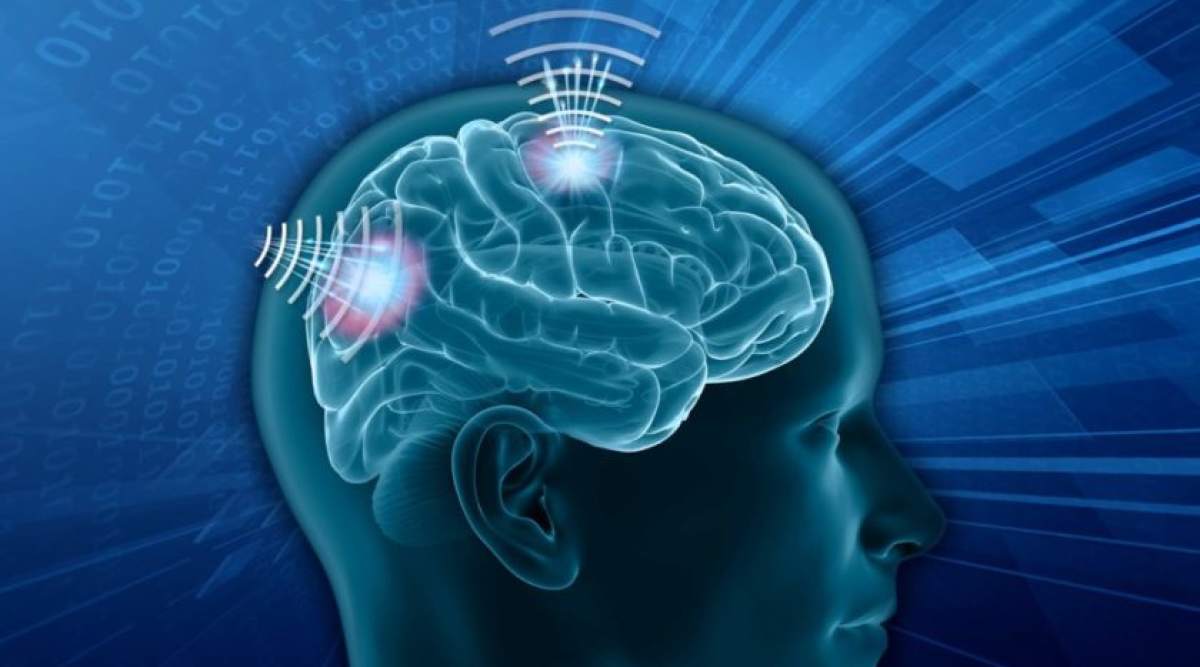
A wireless brain sensor is tiny in size which is used to monitor the brain and then melt away. The use of these new devices is that they breakdown over time, so they don’t create a hassle by existing in your body for a longer term.
Most importantly, the usage of these resorbable devices lessens the requirement of surgery to remove them, which further diminishes the risk of infection and other complications. The tiny sensor device helps the doctors to measure the brain pressure and temperature. Doctors assure that there will be no need for further surgeries because of this device neither nay complications.
9. Robotic Surgery
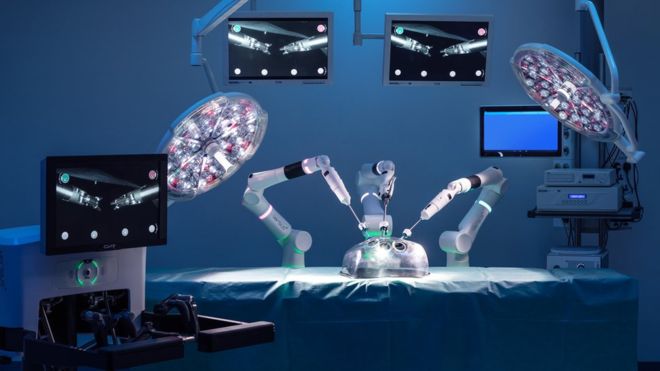
Robotic surgery is an advanced level of surgery where the doctors are assisted by a robotic tools. The Robotic surgery involves latest computer technology with highly qualified and skilled surgeons. The Robotic surgery are types of surgical procedure that can be performed using the robotic tools and systems.
Robotic assisted surgery was implemented to overpower the limitations of already existed minimal surgical procedures and to increase the abilities of surgeons when doing open heart surgeries and other major surgeries.
10. Smart Inhalers

Inhalers are the main source of treatment for asthma patients. The doctors and pulmonologists reveal that if the inhalers are taken correctly, the breathing problem is likely to reduce.
Mostly, patients with breathing problem inhale oxygen air using nebulizer and lead their life. The Inhalers and puffs have paved way for these traditional methodology and gives a handy treatment for those who are in travel and can take a puff wherever needed.
To assist the asthma ad wheezing patients, Bluetooth enabled smart inhalers have been created which is a great revolution. Inhalers are less-prone risks because even if the patient intakes the steroid medicine, the effect of the medicine does not dissolve in blood directly.
Finally, the Digital Health technology enables confidence and partnership through easy access to your health details.
